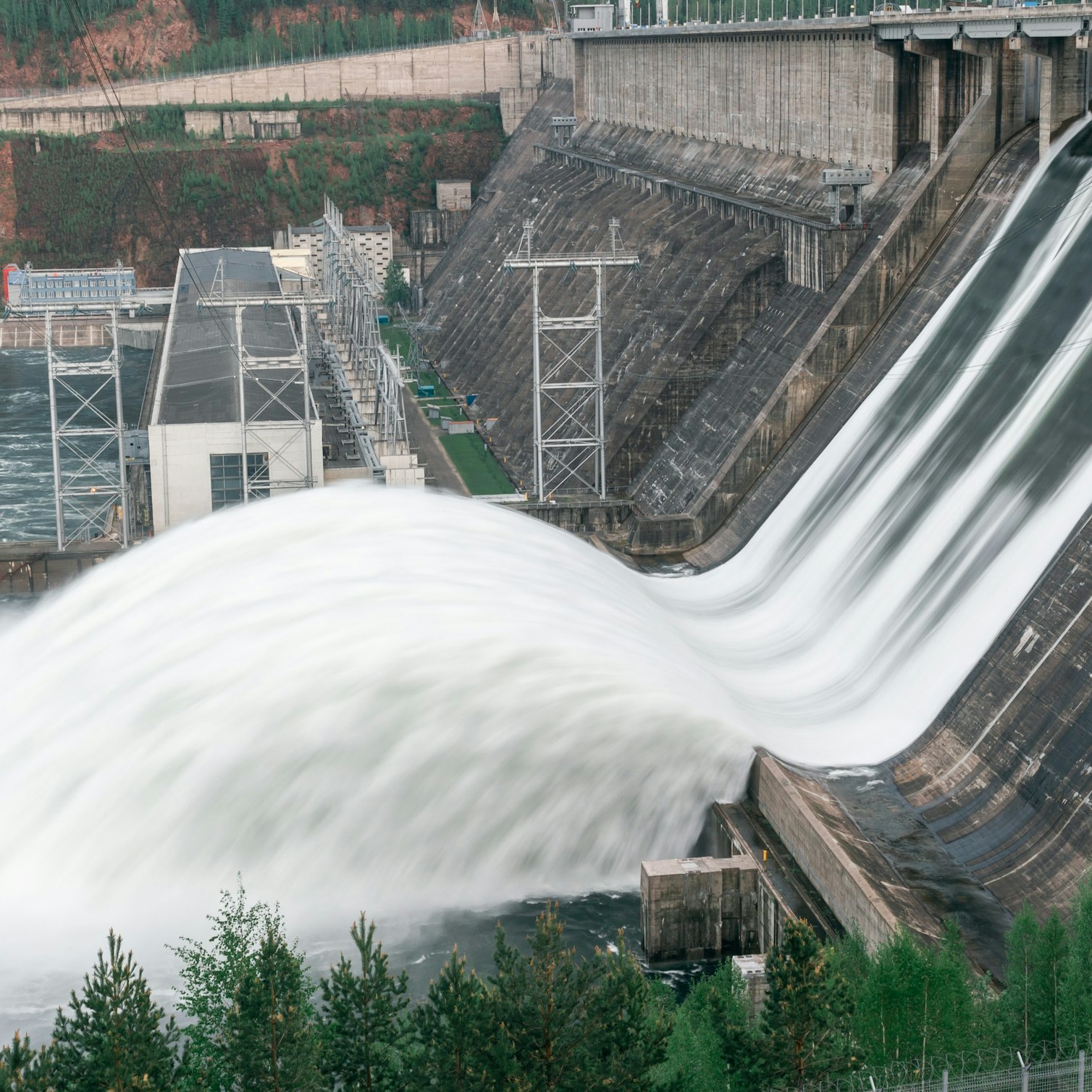- Solar energy blog
- Is solar capacity surpassing hydropower in the US?
Is solar capacity surpassing hydropower in the US?
Explore how the US solar boom is outpacing hydropower, with insights into market growth, challenges, and the future of renewable energy in America.


Laura Rodríguez
Territory Manager Oceania & Nordics
Laura is a renewable and software industry sales professional, currently working at RatedPower as Territory Manager Oceania & Nordics. With a background in International Business and International Trade, Laura previously worked in the business strategy area in various companies as well as as a market analyst for the Government of Spain in Australia.

The renewable energy hierarchy of the United States has been undergoing a shift in recent years. Historically dominated by hydropower, this shift has been driven by the growth of solar, prompting both industry experts and policymakers to reevaluate their predictions for the future of America’s energy mix.
In this blog post, we’ll explore the changing dynamic more closely and evaluate how close solar capacity is to surpassing hydropower in the US.
If you want to take a deeper dive into the current state of the US energy market, its solar market, key players, and what the future might hold for the nation’s renewable energy landscape, download our State of Green: US eBook.

The US renewable market
The US renewable energy market consists of two main segments: mandatory markets and voluntary markets.
Mandatory markets are driven by policies like state renewable portfolio standards (RPSs) that require utilities to source a percentage of power from renewables. Voluntary markets are driven by consumer demand for cleaner energy.
Renewables accounted for about 25% of total US electricity generation in the first half of 2023. The main renewables contributing to the nation’s power supply were wind energy, at 10.2%; hydropower, at 9.7%; and solar energy, at 3.9%. While hydroelectric dams have long been an important source of renewable electricity in the US, wind and solar energy have experienced remarkable growth over the past decade.
Like in much of the world, the growth in the US renewable energy market is projected to continue throughout the rest of the decade. According to projections, the market size will expand from an estimated 434.54 gigawatts (GW) in 2024 to 700.15 GW by 2029, representing a compound annual growth rate (CAGR) of 10.01%.
One reason for these strong projections is the instrumental support being provided by the government. Market expansion is being driven through various government initiatives, including tax credits, grants, subsidies, and a federal commitment to invest in excess of $500 billion in clean energy programs.
In addition, ambitious projects like the Federal Sustainability Plan are aiming to decrease federal greenhouse gas emissions by nearly half within a decade, as well as having an emphasis on international commitments like those outlined in the Paris Agreement.
These are driven by the steady rise in installations of solar photovoltaic (PV) systems and wind turbines, as well as advancements in battery storage, smart inverters, and improved system performance that make renewables more viable and cost-competitive.

Challenges
Despite these encouraging statistics and supportive policies favoring the uptake of renewables, there are still challenges that need to be addressed. One major hurdle comes from stiff competition posed by natural gas. This is often chosen by utility companies that consider it to be more reliable during peak demand periods.
In addition, other issues, such as the intermittent nature of wind and solar generation, high project capital costs, permitting delays, insufficient transmission infrastructure, and grid constraints, can affect its uptake.
In the face of these challenges, recent developments have been particularly exciting and signal that there is plenty of opportunity. Alongside the large investment commitment from the federal government, legislation like the Infrastructure Investment and Jobs Act (IIJA) and Inflation Reduction Act (IRA) will benefit growth in solar, storage, and potentially hydrogen.
Looking for more insights, stats, and opinions on the current state of the renewables sector? Download our Renewable Energy & Solar Research Report 2024 that draws from an industry survey and analysis of solar simulations carried out on the RatedPower Platform.
The US solar boom
One area of the US renewables market that has seen a significant surge in recent times is solar. The boom in solar has been so great that according to forecasts from the US Energy Information Administration (EIA), by the end of 2024, solar generation will surpass hydroelectric generation by an impressive 14%. If this holds true, it will be the first time that solar production has surpassed hydro over the course of a year.
This substantial growth can be attributed to the expansion of both utility-scale and small-scale solar facilities across a number of states. Utility-scale projects are those that generate power directly into the electric grid, while small-scale installations typically serve individual homes or businesses.
By August of last year alone, over 125 GW of total installed solar capacity was recorded in the US. This figure comprised approximately 80 GW sourced from large utility-scale facilities and another estimated at around 45 GW derived solely from smaller-scale operations.
In the third quarter of 2023 alone, the US installed 5.5 GW of total renewable energy capacity, consisting of solar (3.1 GW), BESS (2.1 GW), and wind (288 MW). This is an ideal illustration of the rapid pace of solar expansion in the US.

To put these numbers into the context of the total electricity mix, hydroelectricity output has remained relatively stable. Its overall production capability has been consistently hovering around 80 GW for the last several decades, and if anything, it’s beginning to slow down.
The reasons why are multifaceted, with both tariffs and uncertainties surrounding the IRA legislation having an impact. Import tariffs on crucial materials have increased the costs of hydro projects, making them less competitive compared to rapidly advancing solar.
In addition, investors have been hesitant because of confusion about the IRA’s application and benefits for hydropower projects. While the IRA includes tax credits for applicable hydropower projects, the lack of guidance on implementing these incentives has created uncertainty.
The problems facing the hydro sector have only helped the solar industry. When you add in the rapid installation rates, declining costs of solar panels, and supportive federal policies, it’s easy to understand solar’s ascendency.
Its flexibility, both in terms of scale and location, is another reason why it’s overtaking hydropower. Rather than being confined to only areas with sufficient water flow, solar allows for broad deployment across many different geographical regions.
The EIA’s projection of solar eclipsing the 300 billion kilowatt-hour mark in 2024 and surpassing hydropower for the first time is a sign of things to come. In many respects, the solar boom in the US is just getting started.
Ready to harness the power of the sun and take your solar projects to the next level? Discover RatedPower, the cutting-edge software solution revolutionizing solar project design.
Latest stories
Related posts
Market analysis
Power where it’s needed: Solving LatAm’s grid instability with distributed solar and storage
Find out how a bottom-up approach is solving LatAm’s grid instability, with community-led solar and storage projects giving people control over their energy.
Updated 29 DEC, 25

Market analysis
Powering through the peak: Why solar + storage is gaining momentum in MENAT
Discover how MENAT is building a functioning solar economy and why rising peak demand during extreme heat is squeezing its energy architecture.
Updated 11 DEC, 25


Market analysis
The rise of utility-scale PV + storage plants in Italy
Discover how Italy’s latest policies and auctions are driving utility-scale solar and battery storage projects to meet ambitious 2030 targets.
Updated 4 DEC, 25

- RatedPower
- Solar energy blog
- Is solar capacity surpassing hydropower in the US?
 Watch a demo
Watch a demo Ask our AI Product Expert
Ask our AI Product Expert
